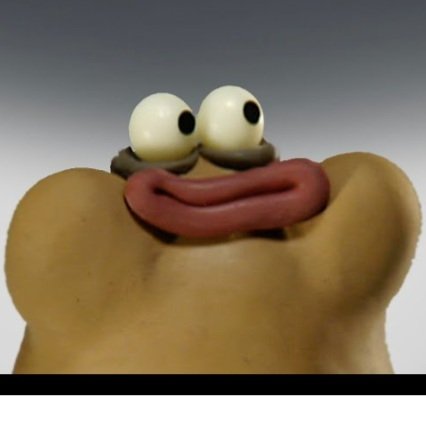From Origins to Originals: BIG PUFFA
Aug 29 2023
From Origins to Originals is a series of posts answering the question, ‘Where do you get your ideas from?’.
In these behind-the-scenes posts, we take some of our most popular works and explore the diverse influences behind them. How disparate sources and images - from art history, contemporary art, architecture, pop culture, television, film, fashion, social media, consumer culture, social history and daily life - are pulled from our collective mental archive, and then developed to create original pieces of sculpture.
This month we look at our 2023 sculpture BIG PUFFA (aka The Generator).
BIG PUFFA is made from fiberglass, polyester resin and plywood. Its dimensions are 6ft 8in (H) x 5ft 8in (W) x 6ft 2in (D). He/She represents joy, exuberance, positivity, and (re-)generation.
Music
The original starting point which kicked off BIG PUFFA’s conception was music, specifically music from the rave and dance scene of the late 1980s and 1990s. The single most important catalyst was one of Missy’s favorite tracks from the era - Passion by Gat Decor (1992). The shapes and rhythm within the classic progressive house track launched BIG PUFFA’s exuberant form. We wanted to create something which reflected the pulsating bass line, mass of movement, collective euphoria and loss of individual ego experienced on the dance floor at the time.
Fun fact: we listened to Passion in the studio at the end of each day to remind us of BIG PUFFA’s origins and keep the joy alive during the very long creation process. You can listen to Passion by Gat Decor here.
The Stuff of Our Past
Kim’s background in stop motion animation influenced BIG PUFFA’s form. His/her malleability and abstract organic body echoes the rounded and shifting shapes of playful, simplified, plasticine figures so often seen in children’s animation. These characters made our minds jump both to the amorphous shapes created by lava lamps of the 1960s/1970s and the 3D cruciform of Jacks or Knucklebones, an antiquated game of our childhoods.
Art Historical References
The characterization of BIG PUFFA finds inspiration in the work of our predecessors of the 20th Century. The grappling of the body in Caro’s Man Removing His Shirt of 1956 is strongly evocative of BIG PUFFA’s dynamic pose. Stumpy legs ground the sculpture and fat arms outstretch into space. The euphoria of Marini’s Horse and Rider of 1955- as well as the star burst of the figure’s limbs, the horse’s head and legs - echo the explosion of BIG PUFFA’s body. In both these - and Gormley’s Field of 2003 - we can also see the use of a tiny head which is out of proportion with the torso and the addition of naively created, deep set eyes. Both of these traits have become signatures of our own figurative sculpture.
The biomorphic movement plays a large part in BIG PUFFA’s conception and form. Ken Price’s ceramics, Jean Arp’s surrealist sculpture and Yayoi Kusama’s oversized pumpkins all presage BIG PUFFA’s organic, cellular, viral shape. Kusama’s adoption of a surface pattern of repeated dots also clearly influences our treatment of BIG PUFFA with colored circular ‘pools’ of resin which move like lines of ants across BIG PUFFA’s tentacular body.
From the Sketchbook & The Studio
Credits
1. Gat Decor, Passion, 1992. Photograph © Effective Records ~ 2. Purple and Brown still image © Rich Webber, Mike Percival, Aardman Animations ~ 3. Mathmos lava lamp © Photo by Victor Serban on Unsplash ~ 4. Modern Jack by Regina Andrew ~ 5. Anthony Caro, Man Removing His Shirt, 1956. Photograph © Anthony Caro by William Rubin, 1975, MOMA ~ 6. Marino Marini, Horse and Rider, 1955. Photograph © Kruller-Moller Museum ~ 7. Antony Gormley, Asian Field 2003/2022, 2022. Photograph © Dan Leung/M+ ~ 8. Yayoi Kusama, Dancing Pumpkin, 2020. Photograph © Robert Benson/Collection of the artist/Ota Fine Arts & David Zwirner. 9. Ken Price, Balls Congo, 2003. Photograph © Linda Schlenger/Ken Price/Fredrik Nilsen 2011. ~ 10. Jean Arp, Mediterranean Group, 1942. Photograph © Israel Museum, Jerusalem by Avshalom Avital
















